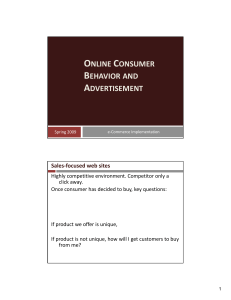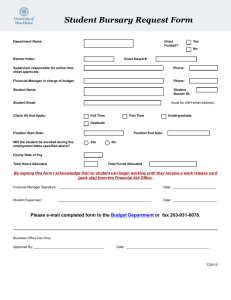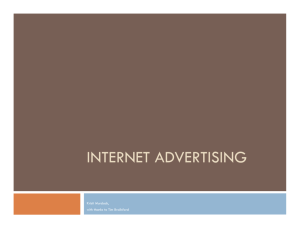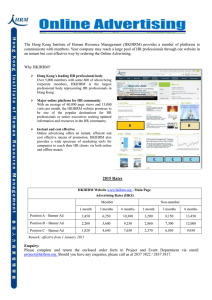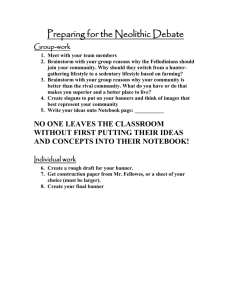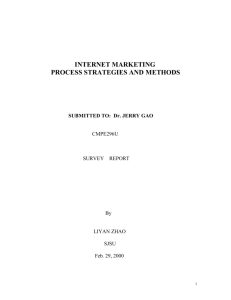Tutorial 3 (Answer)
advertisement
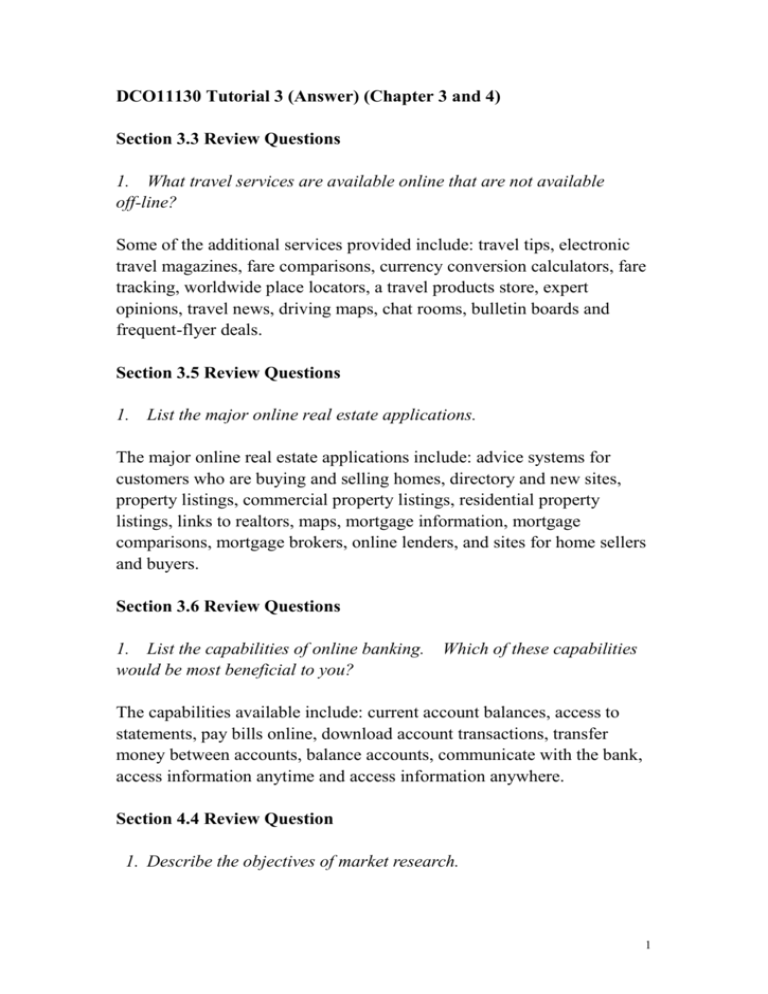
DCO11130 Tutorial 3 (Answer) (Chapter 3 and 4) Section 3.3 Review Questions 1. What travel services are available online that are not available off-line? Some of the additional services provided include: travel tips, electronic travel magazines, fare comparisons, currency conversion calculators, fare tracking, worldwide place locators, a travel products store, expert opinions, travel news, driving maps, chat rooms, bulletin boards and frequent-flyer deals. Section 3.5 Review Questions 1. List the major online real estate applications. The major online real estate applications include: advice systems for customers who are buying and selling homes, directory and new sites, property listings, commercial property listings, residential property listings, links to realtors, maps, mortgage information, mortgage comparisons, mortgage brokers, online lenders, and sites for home sellers and buyers. Section 3.6 Review Questions 1. List the capabilities of online banking. Which of these capabilities would be most beneficial to you? The capabilities available include: current account balances, access to statements, pay bills online, download account transactions, transfer money between accounts, balance accounts, communicate with the bank, access information anytime and access information anywhere. Section 4.4 Review Question 1. Describe the objectives of market research. 1 The objective of market research is to find information that describes the relationships between customers, products, marketing methods and marketers. Market research assists a firm in both their marketing and product mix decisions. 3. Describe how market research is done online and the major market research methods. Online market research is very similar to the research that would be done off-line. Online marketing research is conducted online, and the Internet can make the process quicker and easier. Researchers go through the same steps online in determining what needs to be researched and validating results. Researchers can gain access to a large variety of secondary research available online. The major methods include Web surveys, focus groups, direct feedback, customer scenarios, customer tracking, and analysis of clickstream data. Section 4.6 Review Questions 1. Define Web advertising and the major terms associated with it. Web advertising is the use of the World Wide Web to advertise to customers. Some important terms in Internet advertising include: ad views (the number of times users call-up the page that has a banner on it), button (a small banner link to a Web site), page (an HTML document), click (a tally of each time a visitor clicks on an advertising banner), CPM (the cost per thousand impressions), hit (a request for data from a Web page or file), and visit (a series of requests during one navigation of the Web site). 2. Describe the reasons for the growth in Web advertising. Advertisers are looking to the Web because it is a viable advertising medium. Individuals may be moving away from other advertising mediums and to the Internet. Additionally, the demographics of individuals who use the Internet are generally more affluent then the population as a whole, making an attractive population to advertise to. 2 Web ads also have the benefit of lower cost, increased richness of format and the ability to personalize. Section 4.7 Review Questions 1. Define banner ads and describe their benefits and limitations. Banner ads are graphic advertisements displayed on Web pages that link to the advertiser’s Web site. Banner ads are limited by their cost, space for information and customer indifference. 2. Describe banner swapping and banner exchanges. Banner swapping is an agreement between two companies to display the other’s banner ad on its Web site. Banner exchanges are markets in which companies can trade or exchange placement of banner ads on each other's Web sites. 3. Describe the issues surrounding pop ups and similar ads. These ads can be highly effective for advertisers, but many users consider them annoying and intrusive. 4. Explain how e-mail is used for advertising. It is possible for advertisers to send out large volumes of advertisements contained inside e-mail messages. This is an effective method of advertising to large groups. If the advertiser sends a large number of unrequested e-mail solicitations, it is considered spamming, which is considered by some to be illegal/rude. 3


